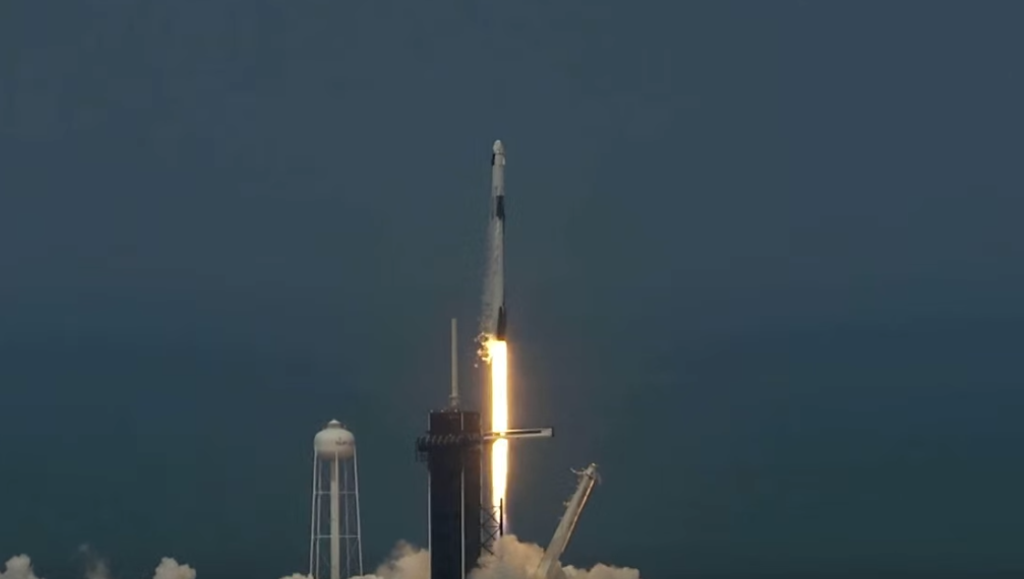Astronauts Robert Behnken and Douglas Hurley launched towards the International Space Station on a Falcon 9 Block 5 rocket on Saturday, at 3:22 p.m local time, marking the first human spaceflight performed by a private-government partnership.

The launch performed at the historic Launch Complex 39-A at the Kennedy Space Center in Florida is the first piloted launch to orbit from American soil since the shuttle was retired nearly nine years ago. Since 2011, when the US Space Shuttle program was discontinued, all manned flights to the International Space Station were performed using the Russian Soyuz rockets.
After a 9-minute two-stage flight, the Crew Dragon capsule coasted for another 3 minutes, performing slight attitude adjustments before physically separating from the entire Falcon 9 rocket.
The Falcon 9’s first-stage rocket made a controlled landing 9 and a half minutes after launch on the drone ship Of Course I Still Love You.
History in the making
The SpaceX Crew Dragon Demo-2 Launch: Crew Dragon Demo-2 mission is SpaceX’s most important test thus far and its success opens the doors wide open for human spaceflight through a government-private partnership.
Behnken and Hurley were originally supposed to head for the ISS on Wednesday, May 27, but the spaceflight was postponed due to bad weather caused by the Tropical Storm Bertha, just 16 minutes and 53 seconds prior to the much-anticipated launch.
Hurley and Behnken will monitor a mostly automated rendezvous with the ISS after approximately 19 hours of flight. They’re expected to dock at the forward port of the lab complex around 10:30 a.m. EDT Sunday.
After the docking process is complete, the two astronauts will board the ISS and officially become members of Expedition 63 Crew. Their tasks will involve performing tests on the Crew Dragon, as well as conducting research.
Behnken previously completed two space shuttle flights in March 2008 and February 2010, and performed three spacewalks during each mission.
Hurley completed two spaceflights in July 2009 and July 2011.
The mission is expected to last no more than 90 days, since the Crew Dragon capsule’s operating life is about 114 days. The spacecraft’s lifespan is limited by its solar panels that get damaged with time.
Once their mission is complete, the two astronauts will leave the ISS by boarding back into the Crew Dragon capsule and performing a deorbit burn lasting 12 minutes, followed by atmospheric re-entry. The capsule should splashdown somewhere in the Atlantic Ocean where it will be rendezvoused by the Go Navigator Recovery Vessel.


